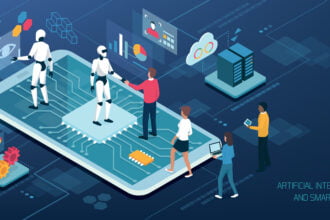Apps have redefined the way we interact, look for information, amuse ourselves or even take care of our health. The cornerstone of all these developments is information provided by the user or the context. Yet, the trouble is that the most powerful, useful and popular apps generate impressive amounts of data that need to be transmitted and stored, and could even be reinterpreted to extract more insights than they were intended for. For example, a user posts a picture of the hotel they’ve checked in, but the same image could be used to classify preferences or to review the hotel.
To develop better apps, it’s essential to address the problem of Big Data in relation to the backend of an app and the challenges developers face like the ones with architecture, costs, reaction time and choosing the most appropriate tools.
Choose the Cloud
As the popularity of an app grows, so does the amount of data generated by the users and the need for storage space. Scalability is one of the primary concerns in app development, especially in B2C environments, where growth can be exponential. If an app becomes viral, its architecture should be able to support the new incoming flux of data.
Therefore, virtual architectures are gaining more popularity, in comparison to owning the data infrastructure. Just storing the data is not the only hassle, maintaining it clean and updated is also an essential requirement. Currently, affordable cloud services are available from giants like Google (Compute Engine), Microsoft (Azure) and Amazon (AWS). The pay-per-use packages allow you to scale storage to your current needs and there is always more available. You don’t have to worry about updating your hardware every few months or burying money in infrastructure before you need it.
The chosen solution should be able to collect different types of data such as geolocation, social media interactions, user behavior, user preferences and more. Each of these types of data comes in a particular file type, but for an overall image, they need to be aggregated and able to be queried simultaneously.
Focus on Real-time Analysis
One defining trait of Big Data is velocity, alongside volume and variety. The speed with which new data is created needs to be matched by the rate at which it can be processed and acted upon. In the backend of an app, incoming information should pass through automated filters, and if certain thresholds are surpassed or a combination of factors is met, it’s necessary to make the app behave in a certain way.
One example is an app monitoring the finances of the customer. Once a large purchase is made, the app should warn the user about endangering savings. Or, in the case of social media, it can be the feature like Facebook’s “Nearby” that would signal by geolocation that you are near a friend. For example, mobile app development services by Iflexion include applications like fleet management, geo-targeting, and mobile workforce management. For a company, such data could mean an opportunity to optimize costs and processes. Other possible applications include personalized discounts when approaching a store.
The primary advantage of the query in real-time is to ask questions that were not easy to anticipate at the beginning of the project but could prove vital for future development. A system like Hadoop can offer this processing power by merely streaming data into it. Just imagine what a transportation company could do by analyzing rush hour patterns as these are highlighted by an app for buying tickets. Real-time analysis is done in the cloud, which makes redundant the need to move data to dedicated servers, thus saving time and money.
Aim for Flexibility
Different goals require different tools, and the backend of a mobile app should provide the instruments for each department to get answers to their questions. These could be organized either in classic, tabular databases accessible through SQL, or they could represent unstructured data like pictures or voice recordings. For example, the marketing department could be interested in user profiles, while the financial one needs a report on quarterly incomes. All these pieces of data are there, they just need to be accessed.
No two apps or companies are similar. Therefore, the needs of each should be defined before choosing a solution. Currently, there is a clear difference between consumer and corporate apps. Due to regulations, legacy systems, and lengthy approval processes, the corporate environment has not fully adapted to what the mobile environment has to offer.
Select the Right Tools
Hadoop Map Reduce is the first choice in analyzing Big Data due to the simplifying algorithm and the fact that you don’t need to move data – just load it into the analysis tool. However, in the last few years a new framework named Spark has emerged, and it is getting good publicity regarding speed and performance thanks to its in-memory processing.
These tools are not mutually exclusive. In fact, they complement each other for faster implementation, reducing costs and avoiding duplication. Map Reduce is recommended for analyzing past data stored in the Hadoop Distributed File System (HDFS), while Spark is more appropriate for real-time streaming data and has improved machine learning capabilities.
For example, Netflix and Uber rely on Spark to give great recommendations on the spot and accommodate any changes the client makes to their original selection, learning more about the user at the same time.
Final Thoughts
Big Data is no longer an option for a mobile app; it is becoming the norm for development. If a few years ago it could offer a competitive advantage, now it puts laggards in an inferior position.
It is paramount to focus on the insights data brings to an app and to design a process for all the exterior concerns. Build your app on a cloud-based architecture for cost control and scalability. Include real-time analysis options by choosing the right tools such as Hadoop or Spark, and don’t forget to remain flexible in your design to accommodate more data, new goals and new channels through which data can be collected.










